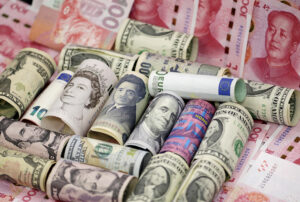Hot money yields $2.1-B net inflow in 2024 — BSP
MORE SHORT-TERM foreign investments entered the Philippines in 2024, data from the Bangko Sentral ng Pilipinas (BSP) showed. Foreign portfolio investments registered with the central bank through authorized agent banks posted a net inflow balance of $2.1 billion last year, a turnaround from the $248.84-million outflow in 2023. These investments are called “hot money” because […]

MORE SHORT-TERM foreign investments entered the Philippines in 2024, data from the Bangko Sentral ng Pilipinas (BSP) showed.
Foreign portfolio investments registered with the central bank through authorized agent banks posted a net inflow balance of $2.1 billion last year, a turnaround from the $248.84-million outflow in 2023.
These investments are called “hot money” because of the ease with which they can enter or leave a jurisdiction, as opposed to foreign direct investment, which is considered less fickle.
Central bank data showed gross inflows jumped by 39.2% to $17.93 billion in 2024 from $12.89 billion a year ago.
Over half or 54.2% of these investments went to peso-denominated government securities, while the rest were invested in Philippine Stock Exchange (PSE)-listed shares of banks; holding firms; property; transportation services and food, beverage and tobacco.
In 2024, the top investor countries were the United Kingdom, Singapore, the United States, Luxembourg and Hong Kong, accounting for the bulk or 86.3% of investments.
Meanwhile, gross outflows totaled $15.83 billion last year, higher by 20.5% from $13.14 billion in 2023.
“Majority (or 96%) of these outflows represented capital repatriation while the remaining 4% pertained to remittance of earnings. The US continued to be the main destination of outflows with 49.8% of total,” the BSP said.
In December alone, the hot money balance stood at a net outflow of $487.37 million in 2024, more than double (137.5%) the $205.18-million outflow in the previous year.
Gross inflows slipped by 1% to $1.055 billion during the month from $1.065 billion a year ago. It also fell by 43.4% from the $1.86-billion inflows recorded in November.
Broken down, 51.7% of these went to peso government securities while the remaining 48.3% were in PSE-listed securities.
In December, inflows came mostly from the United Kingdom, the United States, Singapore, Germany and Ireland, accounting for 76.3% of investment inflows.
On the other hand, gross outflows rose by 21.4% to $1.54 billion from $1.27 billion. Month on month, it declined by 12.6% from $1.76 billion.
“The US remains to be the top destination of outflows, receiving $718.88 million (or 46.6%) of total outward remittances,” it said.
Rizal Commercial Banking Corp. Chief Economist Michael L. Ricafort said the hot money net inflow was due to the start of monetary easing by the US Federal Reserve and BSP.
The US central bank began its easing cycle in September last year, slashing interest rates by a total of 100 basis points (bps) in 2024.
The BSP also kickstarted its rate-cutting cycle in August last year. It reduced borrowing costs by a total of 75 bps by end-2024, bringing the key rate to 5.75%.
This helped “reduce funding costs, spur more investments, employment, trade, and other business activities,” he added.
The country’s recent credit rating upgrades and improvements also supported investor sentiment, Mr. Ricafort said.
In August, Japan-based Rating and Investment Information, Inc. upgraded the Philippines’ investment grade rating to “A-.” — Luisa Maria Jacinta C. Jocson























